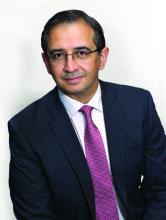|
 
- 现金
- 62111 元
- 精华
- 26
- 帖子
- 30441
- 注册时间
- 2009-10-5
- 最后登录
- 2022-12-28

|
Hepatocellular carcinoma shows risk factor shift
Publish date: September 24, 2020
By Heidi Splete

[url=https://twitter.com/intent/tweet/?text=Hepatocellular carcinoma shows risk factor shift&url=https://www.mdedge.com/internalmedicine/article/229029/oncology/hepatocellular-carcinoma-shows-risk-factor-shift]
[/url][url=https://twitter.com/intent/tweet/?text=Hepatocellular carcinoma shows risk factor shift&url=https://www.mdedge.com/internalmedicine/article/229029/oncology/hepatocellular-carcinoma-shows-risk-factor-shift]
[/url][url=https://www.linkedin.com/shareArticle?mini=true&url=https://www.mdedge.com/internalmedicine/article/229029/oncology/hepatocellular-carcinoma-shows-risk-factor-shift&title=Hepatocellular carcinoma shows risk factor shift&summary=Hepatocellular carcinoma shows risk factor shift&source=https://www.mdedge.com/internalmedicine/article/229029/oncology/hepatocellular-carcinoma-shows-risk-factor-shift]
[/url][url=https://www.linkedin.com/shareArticle?mini=true&url=https://www.mdedge.com/internalmedicine/article/229029/oncology/hepatocellular-carcinoma-shows-risk-factor-shift&title=Hepatocellular carcinoma shows risk factor shift&summary=Hepatocellular carcinoma shows risk factor shift&source=https://www.mdedge.com/internalmedicine/article/229029/oncology/hepatocellular-carcinoma-shows-risk-factor-shift]
[/url]
FROM Digestive Diseases: New Advances
Rates of hepatocellular carcinoma (HCC) continue to rise in the United States, but unevenly so given how the incidence has become highest in the Hispanic population, which is reflected in increased rates in the southern and western states, Hashem B. El-Serag, MD, of Baylor College of Medicine, Houston, said in a virtual presentation at the annual Digestive Diseases: New Advances, which is jointly provided by Rutgers and Global Academy for Medical Education.
[url=https://cdn.mdedge.com/files/s3fs-public/El Serag_Hasem_HOUSTON_web.jpg] [/url]Dr. Hashem B. El-Serag [/url]Dr. Hashem B. El-Serag
In addition to this demographic shift, the risk factors for HCC are shifting, he said. Hepatitis C virus (HCV) has been the dominant risk factor for HCC; for patients with active HCV, the factors historically associated with increased HCC risk have included alcohol consumption, obesity, diabetes, coinfection, and genetics, he said.
This pattern is starting to change. In fact, for patients with active HCV, antiviral treatment with a sustained virologic response has surfaced as the most significant risk factor in the development of HCC, said Dr. El-Serag: Among these patients, sustained virologic response from direct-acting antivirals is associated with a significant reduction in HCC risk. However, it is important to recognize that a residual risk of HCC remains that doesn’t go away for several years, he noted.
“Who are those people who got treated, got cured, and still developed HCC? Those with cirrhosis at the time of treatment,” he said. Those with cirrhosis have cumulative incidence of 1.8% per year, but those without cirrhosis had very low risk, he said.
Some good news in HCC is that rates appear to be declining among young men, and this is thought to be one of the groups who are achieving a cure of HCV, he said.
“One would hope, if goals for HCV elimination are met, that will translate into massive reduction of HCC,” he said.
“The issue now for hepatitis is finding infected patients and curing them,” he noted.
Dr. El-Serag touched on hepatitis B (HBV), which continues to be the driving force of hepatitis infections globally. However, in patients who receive and respond to antiviral treatment “there is a significant and considerable reduction in HCC in the context of hepatitis B” similar to that seen with hepatitis C. Vaccination programs for HBV have started to make the desired impact of reducing HCC in HBV-endemic areas, he noted.
However, current risk factors for HCC are related less to HCV and HBV and more to metabolic syndrome because more people are treated for HCV and HBV, Dr. El-Serag said. He went on to address the new dominant global risk factor for HCC: obesity. Based on data from multiple studies, those who are obese, defined as a body mass index greater than 30 kg/m2, carry a twofold increased risk of developing HCC, he said.
To reduce this risk, treatment targets might address intermediate factors such as abdominal obesity, said Dr. El-Serag. He cited a study published in Hepatology in which individuals in the highest tertile for waist-hip ratio had a threefold higher risk of HCC, compared with those in the lowest tertile.
In addition, consideration of obesity must include type 2 diabetes, which is often linked to obesity and occurs in approximately one-third of adults in the United States, Dr. El-Serag said.
Treatment of type 2 diabetes may make a difference in HCC risk reduction, Dr. El-Serag noted. “The impact of treatment of diabetes on HCC risk is an area of intense interest,” he said. Based on the latest research, “the bottom line is that those treated with metformin experience a 50% reduction in the risk of HCC,” he said
Dr. El-Serag also acknowledged the impact of other risk factors for HCC: the use of statins and the presence of nonalcoholic fatty liver disease (NAFLD).
Although statins have been associated with an increased risk of HCC, “I would not withhold statins for those with cardiovascular indications who also have chronic liver disease,” he said.
Dr. El-Serag noted that, among NAFLD patients, subgroups at even greater risk for HCC include those with diabetes, those older than 65 years, Hispanic race, and those with cirrhosis. These patients should be candidates for surveillance. Metabolic dysfunction traits such as obesity and diabetes are very common conditions, so it’s important to look at other, more specific factors, he added. “I hope that there will be tools to help clinicians classify or risk-stratify patients into different buckets,” he said.
Areas for further research on HCC continue to include risk stratification, mechanisms of action, and HCC prevention related to treatment of metabolic syndrome, he emphasized.
Dr. El-Serag had no financial conflicts to disclose. Global Academy for Medical Education and this news organization are owned by the same parent company.
SOURCE: El-Serag HB. Digestive Diseases: New Advances 2020.
|
|